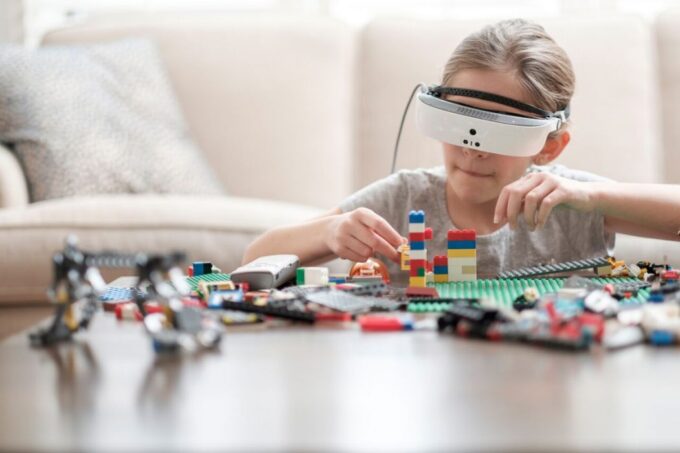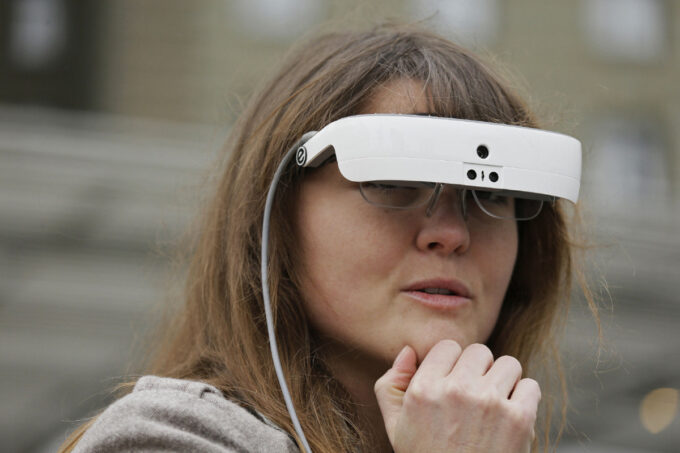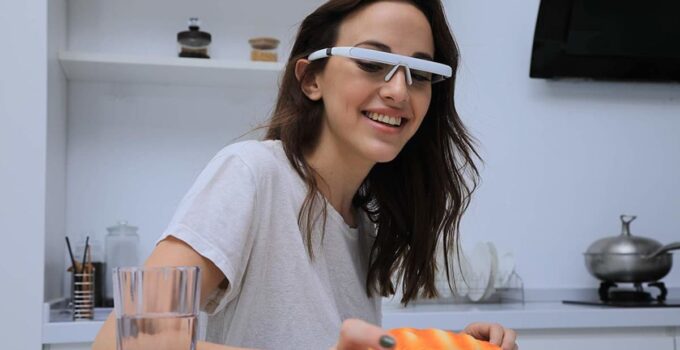Being legally blind isn’t the end of the world. It’s true you’ll have a few things inaccessible to you, like driving a vehicle, quickly recognizing people’s faces, telling colors apart, seeing your monitor or TV, or reading a book. But always remember you can still walk on and do all the things most people can do. However, it doesn’t mean it’s fun and okay to have impaired vision and do nothing about it.
Thankfully, many low vision aids and equipment are available to improve the quality of life of legally blind people. Medical tech has come a long way, and people with vision impairment aren’t limited to prescription glasses anymore. Before, some of the types of low vision aid devices you would encounter on the market are reading machines, computer-assisted technologies, magnifiers, and talking appliances. Now, most modern low vision aids integrate most of the technologies available to ensure a person with low vision can see better.
Low vision aid devices that are currently available on the market come in many makes and forms. And depending on the cause of your vision impairment, you need to choose the right vision aid for you. If you’re looking for a low vision aid device and hesitant to get one because you don’t know what to look for, continue reading this quick guide.
Electronic glasses

Source: betakit.com
While not as bulky as other low vision aid devices, most electronic glasses are thick and weighty. A few models may have external battery packs, but most already have built-in batteries on them for convenience. The challenge with choosing electronic glasses is there are many brands and models to choose from.
Spec-wise, you should look for one with a higher degree of view. Note that these glasses will completely block your vision, and you’ll rely on the images their cameras can capture. If you choose one with a low degree of view, you may miss many things in your surroundings, which could lead to accidents. And typically, if you’re legally blind, you may already suffer from tunnel vision, which has 20 or fewer degrees of the visual field.
Another thing you can focus on is the magnification range. Depending on your condition, you may want electronic glasses that can, at the very least, magnify images by 12×, which should be enough for you to read signs on the road without trouble. If you’re eager to know more about electronic eyewear, visit the eSight website and similar sites.
Electronic glasses, smartphone, and VR headset combo
Yes, you read it right—virtual reality (VR) tech can aid legally blind people. Although bulky, wearing electronic glasses combined with a smartphone and VR headset can allow you to have a magnified view of everything within the phone camera’s vision. And since it uses a smartphone, you can configure this device’s settings to suit your needs.
The smartphone can come with various utility apps like text-to-speech with optical character recognition (OCR) technology in some packages. Also, some allow voice commands, which make the device hands-free.
Attachable camera

Source: thestar.com
The main advantage of attachable cameras is they’re lighter compared to other low vision aids available on the market. Also, they don’t look weird as they can attach to regular eyewear, so you’re free to get one and stick it to whatever pair of glasses you’re wearing to take care of your eye health.
However, because of the simplicity of the design, the features and functions they offer aren’t robust. Nonetheless, it can often be enough if you just want to make it easy for you to read and recognize faces. However, you can still get robust and expensive models that can provide rich features, such as text-to-speech, gesture recognition, and identification capabilities.
Typically, most of these attachable cameras help people with low vision through voice prompts. Some models can focus on people and objects that users will point to. Meanwhile, some can notify users when something comes close within their proximity.
Digital magnifying mounts
Digital magnifying mounts can be bulky as they often have three components: the strap, electronic glasses, and magnification scope or camera. Also, they aren’t as “normal” looking as regular eyeglasses. While digital magnifying mounts may not be the first choice of many, it’s ideal for people who are having trouble seeing at a distance.
Digital magnifying mounts can be considered the predecessor of modern electronic glasses for low vision. However, they’re still in production, and some of them have multiple features that can further assist people with low vision problems. For example, some models can allow the mount to interact with televisions to enable users to watch their favorite shows with little to no difficulty.
And as these magnifying mounts consume electricity, some of them may require you to connect them constantly to their external battery pack, which can be cumbersome. In some older models, the mount controls are embedded on the battery pack as well, so you need to carry it around, too.
Nonwearable devices

Source: thegadgetflow.com
If you don’t need vision aid wearables with high-tech functions like OCR, image magnification, and text-to-speech, you can settle for classic low vision aid tools. There are nonwearable devices you can use to help you see and read. A few of them are telescopes, handheld magnifiers, and refracted glasses.
The great thing about them is most of them are inexpensive. Wearable low vision aids can easily cost you more than USD$1,000 to USD$2,000. In comparison, a magnifying glass with light only costs between USD$10 and USD$20.
Conclusion
Together with other low vision aid devices, getting one of these mentioned above can make it easy to go on with your day-to-day life. Of course, prioritize choosing the ones that can alleviate the vision impairment you have. Next, consider the weight and other inconveniences that come with the device you’ll get. Lastly, worry about how the device looks and how expensive it will be to get one.







